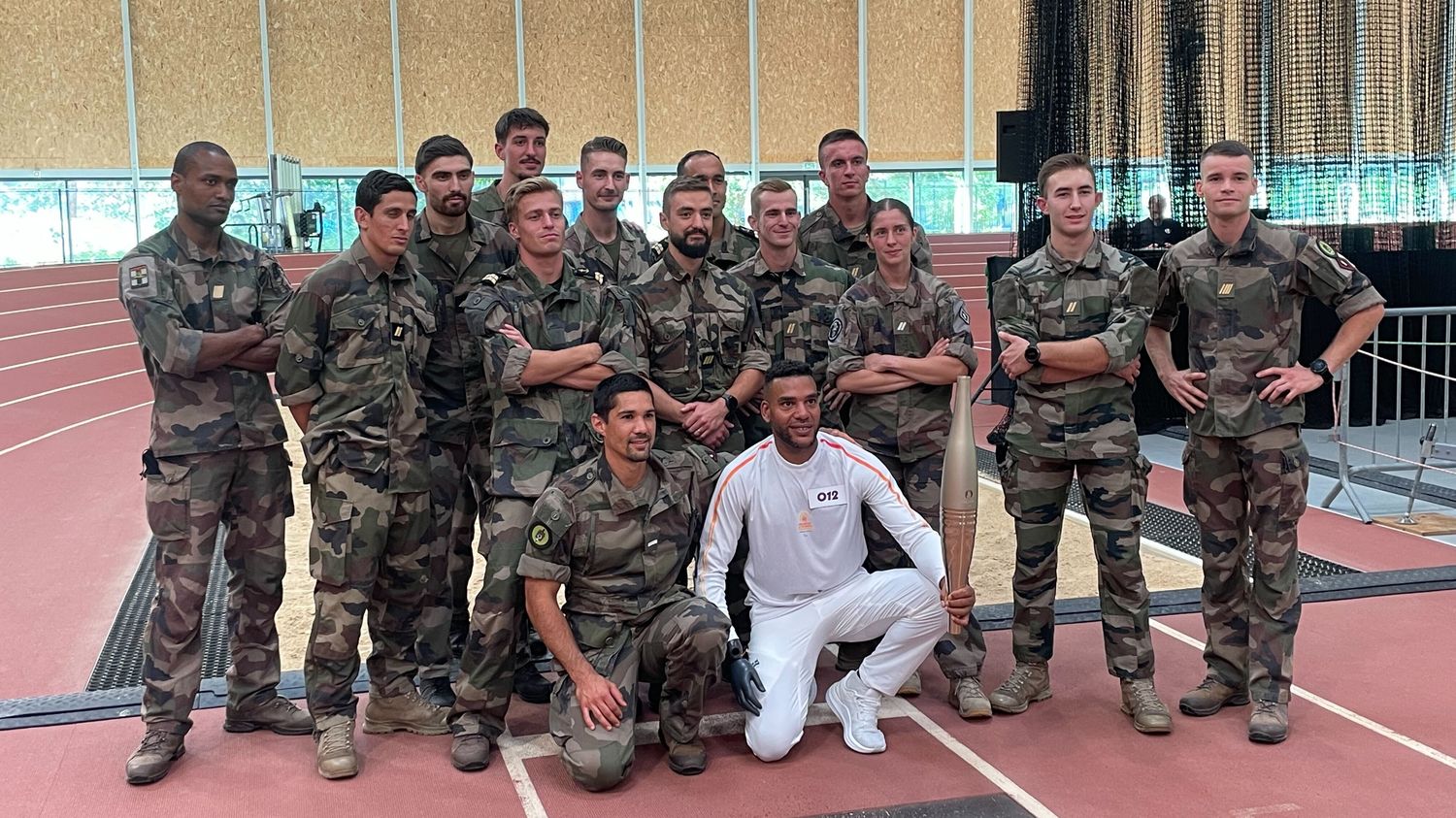Published
Reading time: 4 min

The Paralympic flame passed through the National Defense Sports Center in Fontainebleau on Tuesday. A place where the army accompanies its many top athletes and treats its wounded.
Alain Akakpo lets go of the Paralympic flame for just a few seconds. He greets the public, his brothers in arms and the officials, gathered on Tuesday, August 27 in the Alain-Mimoun hall of the National Defense Sports Center (CNSD), in Fontainebleau (Seine-et-Marne). Then the former Paralympian, fourth in the 2012 London Paralympic Games in the long jump, does a lap of the track to conclude his relay of the day, while 12 torches circulate throughout France until Wednesday, before reaching Paris.. He place the flame in a small lantern and sing a Marseillaise highly symbolic, on the eve of the start of the Paralympic Games.
This moment “powerful to share” for the instructor at the CNSD tells a little about the link between the army and sport, whether Olympic or Paralympic. A former sniper, Alain Akakpo was injured on exercise at the age of 19, in 2004. He lost his right arm because of a grenade that exploded in his hand, then went through difficult months before rebuilding himself at the CNSD, lwhere the army welcomes its many top athletes and treats its wounded. He became an instructor there, while starting a high-level career in para-athletics. “At first, I hid my disability, I wasn’t comfortable with the way others looked at me and then sport allowed me to rebuild myself, find balance and reclaim my body.”
Two years after its debut, “at the CNSD where everything began and where everything ends”, Alain Akakpo competed in the London Paralympic Games. He then won two military world champion titles and several gold medals at the Invictus Games (specific Games for wounded soldiers), before retraining in parataekwondo. “At the CNSD, we train soldiers, we rebuild the wounded and we welcome athletes for competition, and Alain Akakpo perfectly represents these three aspects,” greets General Paul Sanzey, who heads the center.

Nestled on the edge of the Fontainebleau forest, the “reference center for military sports”, as General Sanzey describes it, brings together many top athletes, even if very few of them actually work for it. At the Olympics, 21 medalists, including judoka Clarisse Agbegnenou and Olympic BMX vice-champion Sylvain André, represented the army and came from the CNSD, “the image of military sport”according to General Sanzey. For the Paralympic Games, 28 French athletes come from the CNSD. Some have been disabled since birth, while a few became disabled after an accident. This is the case for Thomas Laronce (sitting volleyball) or Rémy Boullé (paracanoe-kayak), who became paraplegic after a parachute accident during training.
But the CNSD also fulfills another mission: that of treating the physically or mentally injured in the army. Nearly 300 people pass through the place each year to get back into physical activity, start a career change or discover a new sport. “Sport is a crutch for the injured, a way to set new goals”explains Captain Martin, who heads the wounded soldiers’ reconstruction unit. Getting soldiers, sometimes from the special forces, to accept that life goes on after a serious injury is not easy.
“When you’re in the military, you’re taught to be strong, brave, but the day I found myself with paralyzed legs, in a bed with a corset, I was ashamed of myself.”testifies Bernard, injured in Mali in 2016, who has since regained his mobility but suffers from post-traumatic stress after a mission in AfghanistanThis former field soldier, who has been retrained for an administrative position linked to the army, is preparing for the Invictus Games, where the competitive aspect is secondary and the level is much lower than at the Paralympic Games.

For Bernard as for the 18 other selected soldiers for the Invictus Gamescompetition is a pretext. “The Invictus Games are the final stage of our reconstruction. We represent France, but we also show that we are no longer at rock bottom and not finished.” In Vancouver (Canada), in February 2025, Bernard will compete in the wheelchair basketball and wheelchair rugby events, as well as the biathlon and skeleton individually. In the meantime, he spent the afternoon watching the torchbearers pass the flame to each other in the aisles of the CNSD. Among them, Major Teddy, his trainer. This instructor spends his time rubbing shoulders with damaged bodies and disoriented minds. “The hardest part is the first step. For some, it will take a few months, for others a few years. We often see the soldier through his weapons, but there are other horizons”he assures. Sport is one of them.
